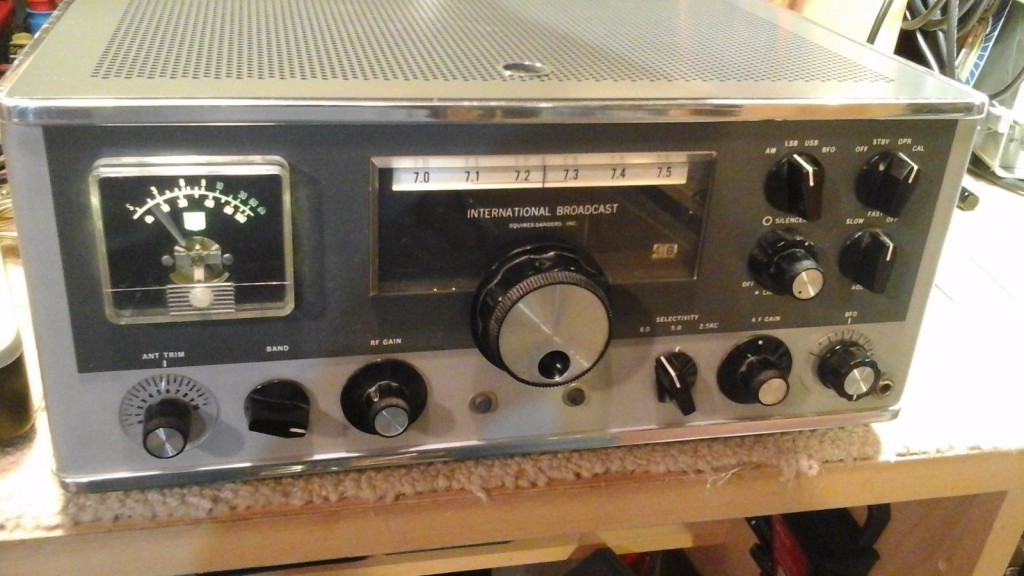SWLing Post contributor, Dan Robinson, notes the following eBay link via the Extreme Shortwave Listening Facebook group:
“One of the rarest receivers, first one seen in years….famously pictured in the shack of the late Richard E. Wood from the 1970s… the Squires Sanders SS-IBS.”
Click here to view the Squires Sanders SS-1BS on eBay.
What a beautiful radio! I don’t think I’ve ever seen one int he wild. I’m pretty sure it’ll soar in price once the bidding truly starts.


It’s a legendary receiver that either brought new ideas to receivers, or brought them to the amateur radio level.
There’s an article in QST in 1963 from Squires about this new stuff, I’ve never seen it so I don’t know if he’s talking in abstract terms, or revealing this receiver.
A big difference is that there’s no RF amplifier before the mixer, and the mixer is balanced. But he throws some of that out by going to double conversion, I assume for tuning reasons. The first IF is 500KHz wide, the first oscillator is crystal controlled and the second oscillator is variable, as seen in top end receivers of the day. The alternative would be a tuneable oscillator that was switched per band (instability from the switch, and the higher the band, the higher the frequency, hence stability) or mixing the tuneable oscillator with a crystal oscillator before feeding the first mixer, which can cause spurs without proper filtering).
The second IF is 1MHz, and having a filter so high was relatively new, though maybe some rigs had moved up to HF filters at the time.
It apparently is fussy about the antenna, or matching, because of the lack of RF amplifier.
Soon there’d be receivers that converted to 9MHz or so directly, saying goodbye to most image problems. Heathkit had a general coverage receiver later in the sixties that had an IF, with crystal filter, at 1680KHz, a relatively cheap receiver with much greater image rejection on the higher bands. The ham band only Heathkit HR-10 used the same IF and filter.
Then a bit later, synthesizers arrived that made it much easier to build better receivers.
There was a wave of building using the 7360 balanced mixer used in this receiver, and frontend q-multipliers to deal with the lack of front end selectivity. But as semiconductors and ICs came along, it became much easier for mixers to be balanced or double balanced.
Michael
I like the chrome stainless steel motif. There is a lesson for modern radio designers could take away. They do it with kitchen appliances, how about radios?